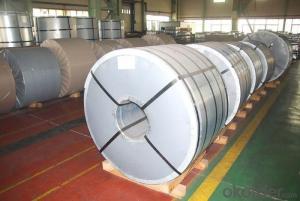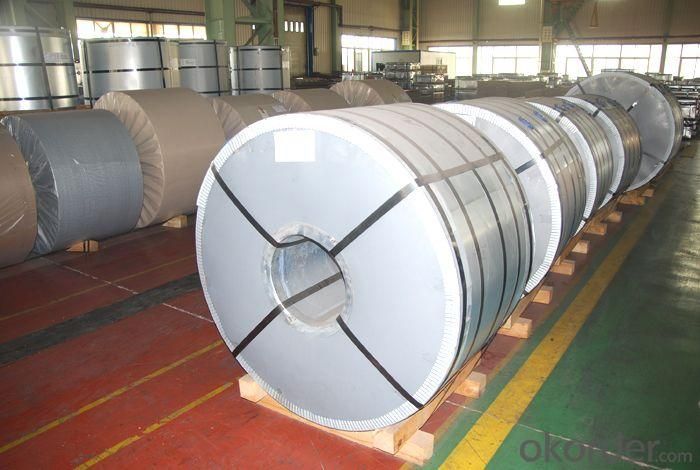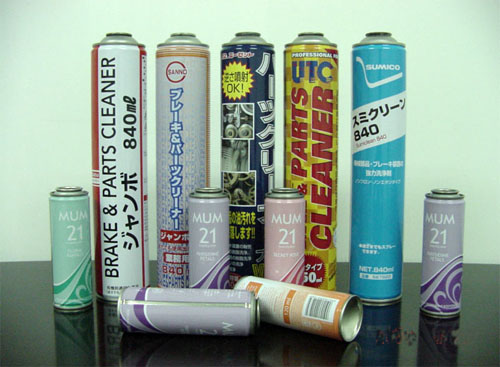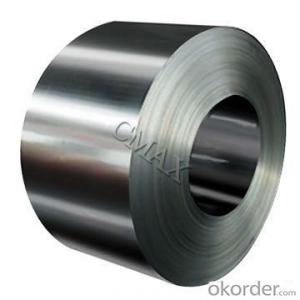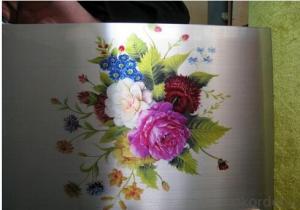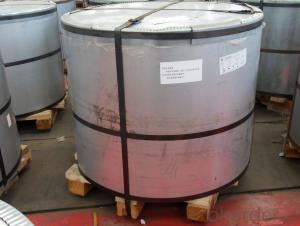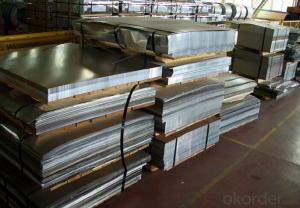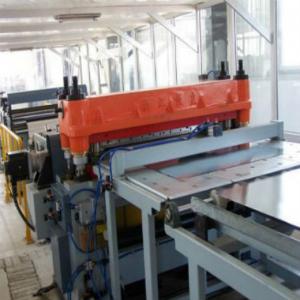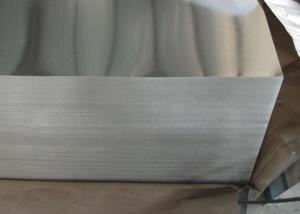Printed Tinplate For Aerosol Cans, GIS G3303
- Loading Port:
- China main port
- Payment Terms:
- TT OR LC
- Min Order Qty:
- 25 m.t.
- Supply Capability:
- 40000 m.t./month
OKorder Service Pledge
OKorder Financial Service
You Might Also Like
1.Usage
Tinplate is widely used for making all types of containers, containing industrial usage such as paint can, oil can, aerosol cans etc., and food cans like milk powder cans, tomato paste can, dry food cans etc.
2. Quality
As a state owned company and a large tinplate supplier in China, our tinplate quality ranks 1st level in China, similar to Bao Steel, Posco etc.
3. Specification
standard: GB/T2520, JIS G3303, DIN EN10202
Material: MR /SPCC
Thickness available: 0.16-0.50MM
Width available: 600~1050MM
Temper grade: T1 – DR8
Tin coating: ordinary 2.8g/2.8g, 5.6g/5.6g and others
Package: sea worthy export package.
Applications: Tin can for chemicals & paint cans, industrial cans, food cans
4. Our factory photo & equipments

5. Our Markets:
now our tinplate has been sold to more than 50 countries, including Europe country, Gulf Area, South American, South Afric etc.
6. Our Overseas Wareouses:
Furthermore, in the year 2014, we have more than 10 overseas warehouses all over the word, located in KSA, UAE, Oman, Russia, Kuwait, Qatar, Oman, Chile, Brazil etc.
7. FAQ
a. what's the annual output?
about 500,000 tons per year.
b. where's the raw matrial from?
our hot rolled coil is purchased from Capital Steel and other state owned mill, with quite good quality.
c. how long is the delivery time?
normally for SPCC about 45~55 days, while 65~75 days for MR material
d. how to control the quality during production process?
inside our workshop, we have MES syestem. It realizes the optimization of the production procedure in the workshop. It could record each step of the whole production procedures, and if some problem appears, factory could easily found and take action, it’s quite helpful to monitor and control the quality.
- Q: What are the common sizes and thicknesses of tinplate?
- Common sizes and thicknesses of tinplate vary depending on the specific application. However, some commonly used sizes include 0.14mm, 0.17mm, and 0.20mm thicknesses, with standard widths ranging from 600mm to 1200mm. These sizes are frequently employed in the production of food and beverage cans, aerosol cans, and other packaging materials.
- Q: How can recycled tin cans be recycled?
- The broken material is separated by the air whirling sorting system, and the metal and nonmetal are separated from each other. Moreover, the whole system is equipped with a dust removing device to minimize the damage caused by dust pollution in the process of production.Tin tins, crushing machines, equipment and maintenance costs are low: equipment design is reasonable, well made, extending the service life of equipment, reducing the use and maintenance costs of equipment.
- Q: How does tinplate handle exposure to pressure and impact?
- Tinplate is known for its excellent strength and durability, making it capable of handling exposure to both pressure and impact effectively. It can withstand moderate levels of pressure without deformation or damage, and its rigid structure helps to absorb and distribute impact forces, minimizing the risk of denting or cracking. Overall, tinplate's resilience and robustness make it a reliable choice for applications where exposure to pressure and impact is expected.
- Q: How is tinplate used in the manufacturing of toys?
- Tinplate is commonly used in the manufacturing of toys due to its durability and malleability. It provides a sturdy and safe material for creating toy parts such as car bodies, dollhouse accessories, or tin soldiers. Tinplate can be easily shaped and painted, allowing manufacturers to create intricate designs and vibrant colors on toys. Furthermore, its resistance to corrosion ensures that the toys remain in good condition for an extended period of time.
- Q: How does tinplate perform in terms of light protection?
- Tinplate performs fairly well in terms of light protection. Its metal composition provides a good barrier against light, preventing the penetration of UV rays and reducing the risk of light-induced degradation or spoilage of the contents. However, its light protection capabilities may vary depending on the thickness and quality of the tin coating applied to the steel substrate.
- Q: How is tinplate recycled and what are its recycling rates?
- Tinplate, which is commonly used for food and beverage packaging, is recycled through a process called steel recycling. The recycling of tinplate involves collecting and separating it from other waste materials, followed by shredding, melting, and refining to produce new steel products. Tinplate has a high recycling rate, with approximately 80-90% of tinplate packaging being recycled globally. This high recycling rate is due to the fact that tinplate is a valuable material that can be easily and efficiently recycled, reducing the need for raw materials and minimizing environmental impact.
- Q: How does tinplate contribute to the attractiveness of cosmetic packaging?
- Tinplate contributes to the attractiveness of cosmetic packaging due to its unique properties. Its shiny and reflective surface enhances the visual appeal of the packaging, making it look more luxurious and high-end. Additionally, tinplate offers excellent printability, allowing for intricate designs, vibrant colors, and high-quality graphics to be displayed on the packaging, which further enhances its attractiveness. The durability and strength of tinplate also ensure that the packaging remains intact and visually appealing throughout its lifespan.
- Q: How does tinplate contribute to the preservation of historical artifacts?
- Tinplate contributes to the preservation of historical artifacts by providing a protective barrier against environmental factors such as moisture, oxygen, and light. It helps prevent corrosion, rusting, and degradation of the artifacts, thus extending their lifespan and maintaining their historical value.
- Q: Can tinplate be used for signage and displays?
- Yes, tinplate can be used for signage and displays. Tinplate is a versatile material that offers excellent durability and can be easily shaped and printed on, making it ideal for creating eye-catching signage and displays.
- Q: What are the different closure options for tinplate packaging?
- The different closure options for tinplate packaging include twist-off caps, lug caps, screw caps, and press-on caps.
Send your message to us
Printed Tinplate For Aerosol Cans, GIS G3303
- Loading Port:
- China main port
- Payment Terms:
- TT OR LC
- Min Order Qty:
- 25 m.t.
- Supply Capability:
- 40000 m.t./month
OKorder Service Pledge
OKorder Financial Service
Similar products
Hot products
Hot Searches
Related keywords
